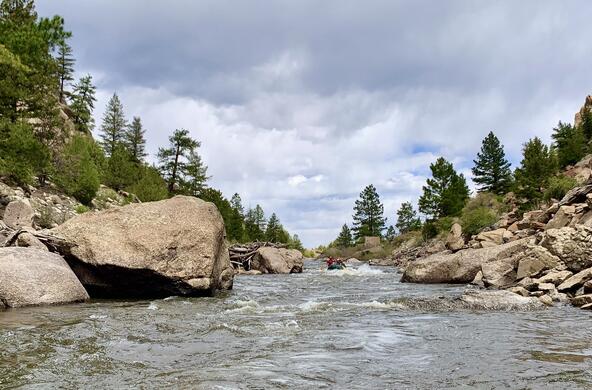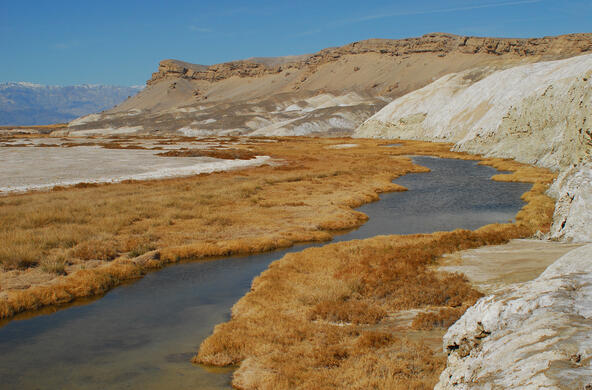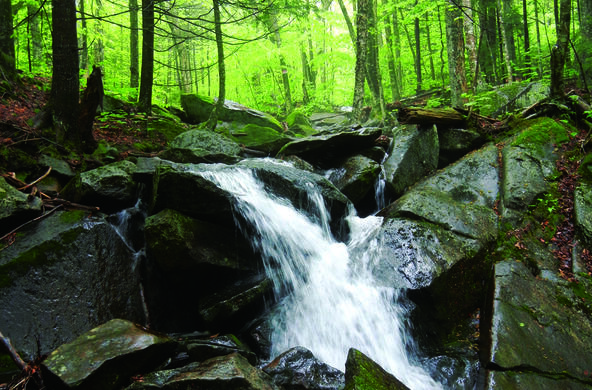Forests, grasslands, and other natural areas around the world have access to about a quarter less nitrogen than previously estimated, according to a new study published today in Nature. Coauthored by Sarah Batterman, an ecologist at Cary Institute of Ecosystem Studies, findings have implications for natural climate solutions, as nitrogen is essential to plant growth and thus the removal of carbon from the atmosphere.
“Outside of some tropical forests and drylands, we found that the amount of nitrogen available to plants in many natural areas has been overestimated,” said Batterman, “Our results suggest there are nitrogen constraints on the terrestrial carbon sink in a range of biomes, including prairies and temperate forests.”
The study focused on nitrogen made available to plants through biological nitrogen fixation. In this process microbes — often living symbiotically with plants — transform nitrogen gas from the air into a form that plants can use to fuel growth and development. For instance, nitrogen is a crucial component of chlorophyll, the green pigment that allows plants to convert carbon dioxide into plant growth via photosynthesis. This carbon is then stored in wood, leaves, roots, and soils.
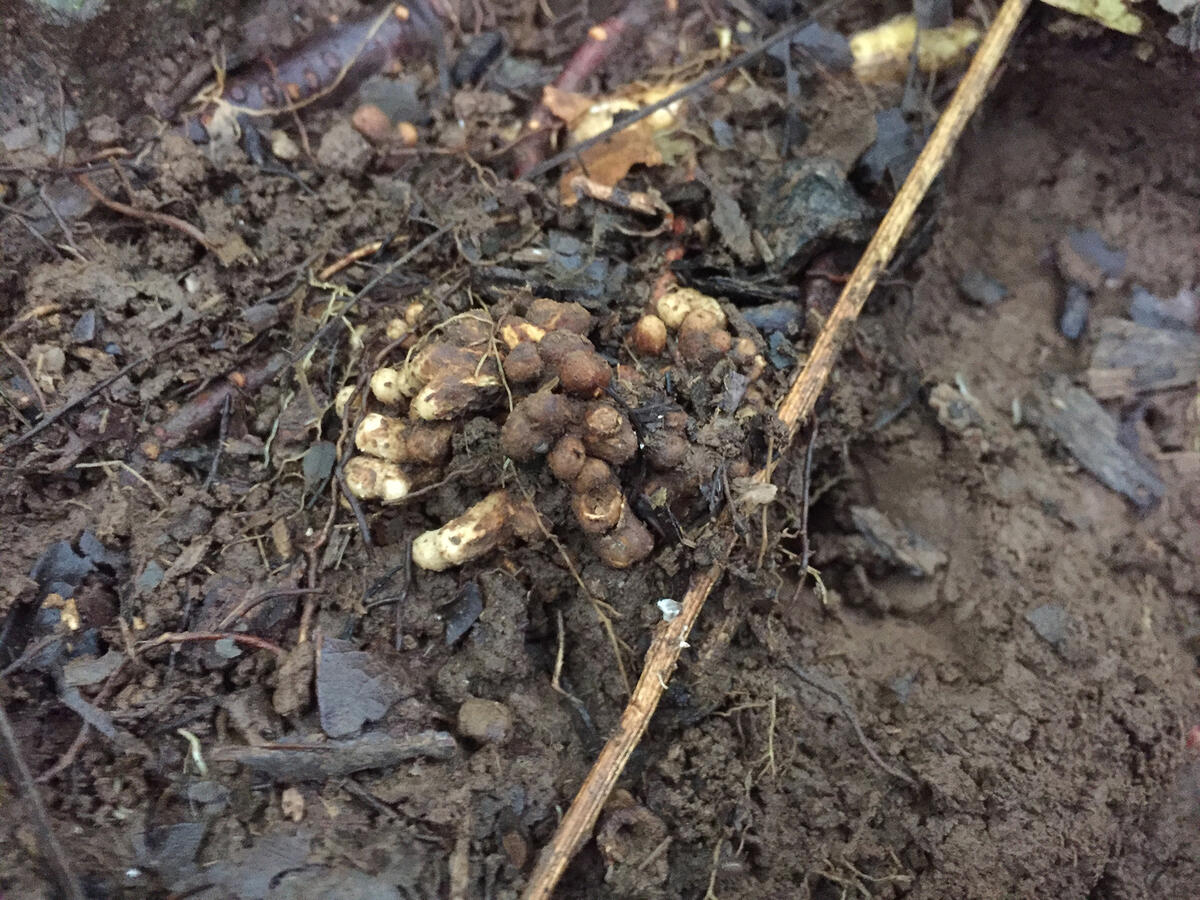
Led by Carla Reis Ely of the Oak Ridge Institute for Science and Education, an international team of scientists quantified the global distribution and magnitude of land-based biological nitrogen fixation in both natural and agricultural biomes. They found that previous estimates of nitrogen fixation had been skewed by sampling bias. Field measurements of nitrogen fixation were often taken in natural areas where nitrogen-fixing organisms were on average 17 times more prevalent than they are worldwide, leading to an overestimation of nitrogen availability.
Whereas much of the data was historically based in tropical forests, the new study includes biological nitrogen fixation estimates from previously underrepresented niches — including shrubs, herbs, mosses, dead wood, and more — helping to identify nitrogen hotspots and deserts.
“By building the most extensive dataset of biological nitrogen fixation rates on land, and developing a new and biologically realistic algorithm for scaling up from field measurements,” Batterman explained, “we calculated that the amount of nitrogen fixation by microbes in natural terrestrial ecosystems is approximately 25 million tons lower each year than previously estimated.” The missing nitrogen is equivalent to about 113 fully loaded cargo container ships.
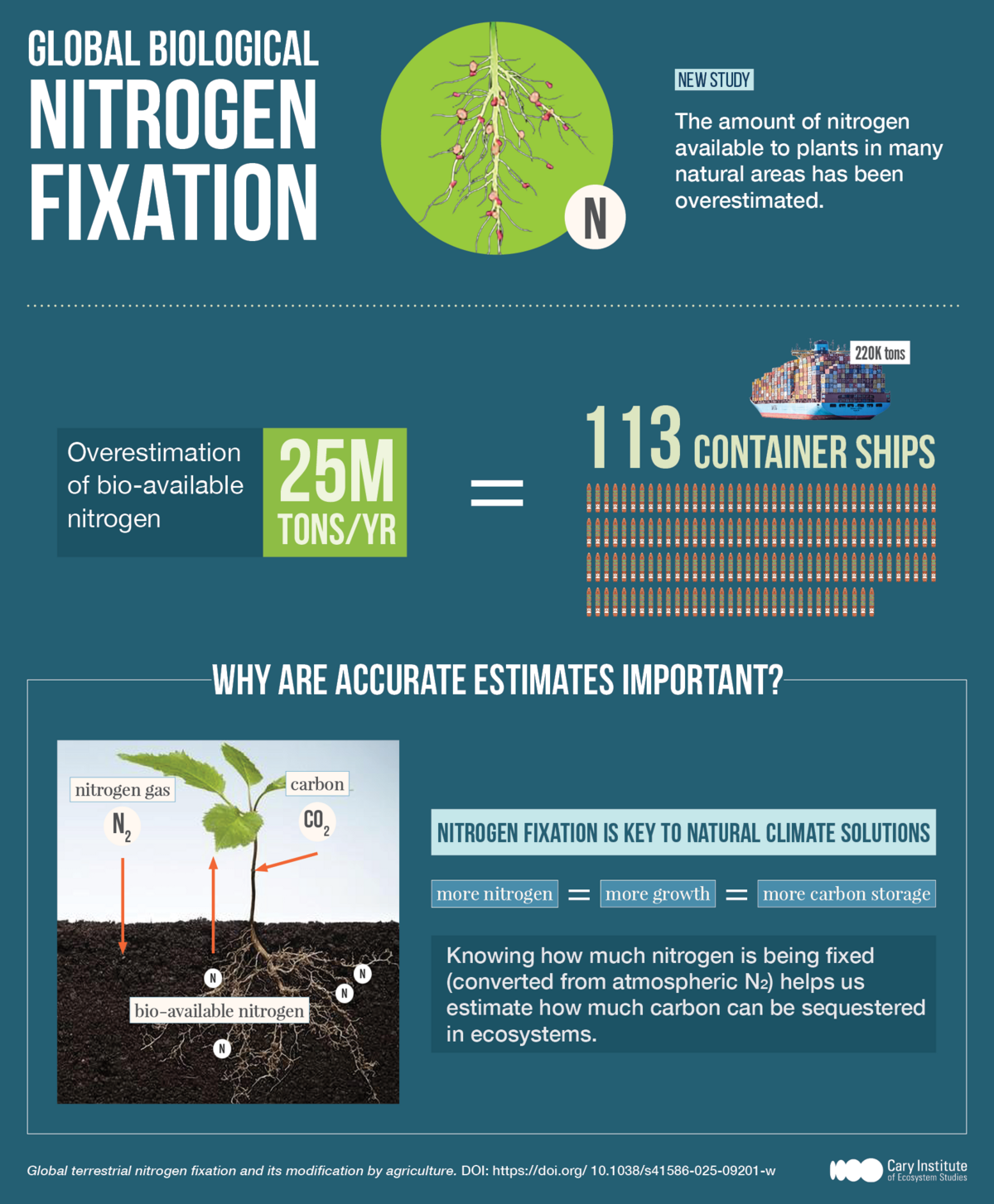
Having more accurate biological nitrogen fixation rates allows for vast improvements in the models that are used to predict how much carbon dioxide the land system takes up, and how it will be affected by climate change, Batterman added.
The analysis also revealed a rise in biological nitrogen fixation in agricultural systems that may be contributing to the degradation of land, air, and water quality. Nitrogen-fixing crops such as soybeans and alfalfa support soil health and help produce food for a growing global population, but in excess, nitrogen can be harmful. The team estimated that agricultural crops alone (not including chemical fertilizers) have increased terrestrial biological nitrogen fixation by 64% relative to pre-industrial rates.
“Excess nitrogen can leach into groundwater or runoff into lakes and streams, causing algae blooms and harming aquatic life,” said Reis Ely, who led the study while she was a postdoctoral scholar at Oregon State University.
In addition, surplus nitrogen can become nitrous oxide, a potent greenhouse gas, and high nitrogen levels can favor fast-growing invasive plants that squeeze out native species and reduce biodiversity.
The study “helps us understand the degree to which we have modified the nitrogen cycle, exceeding the safe operating space for humanity when it comes to nitrogen,” said Batterman.
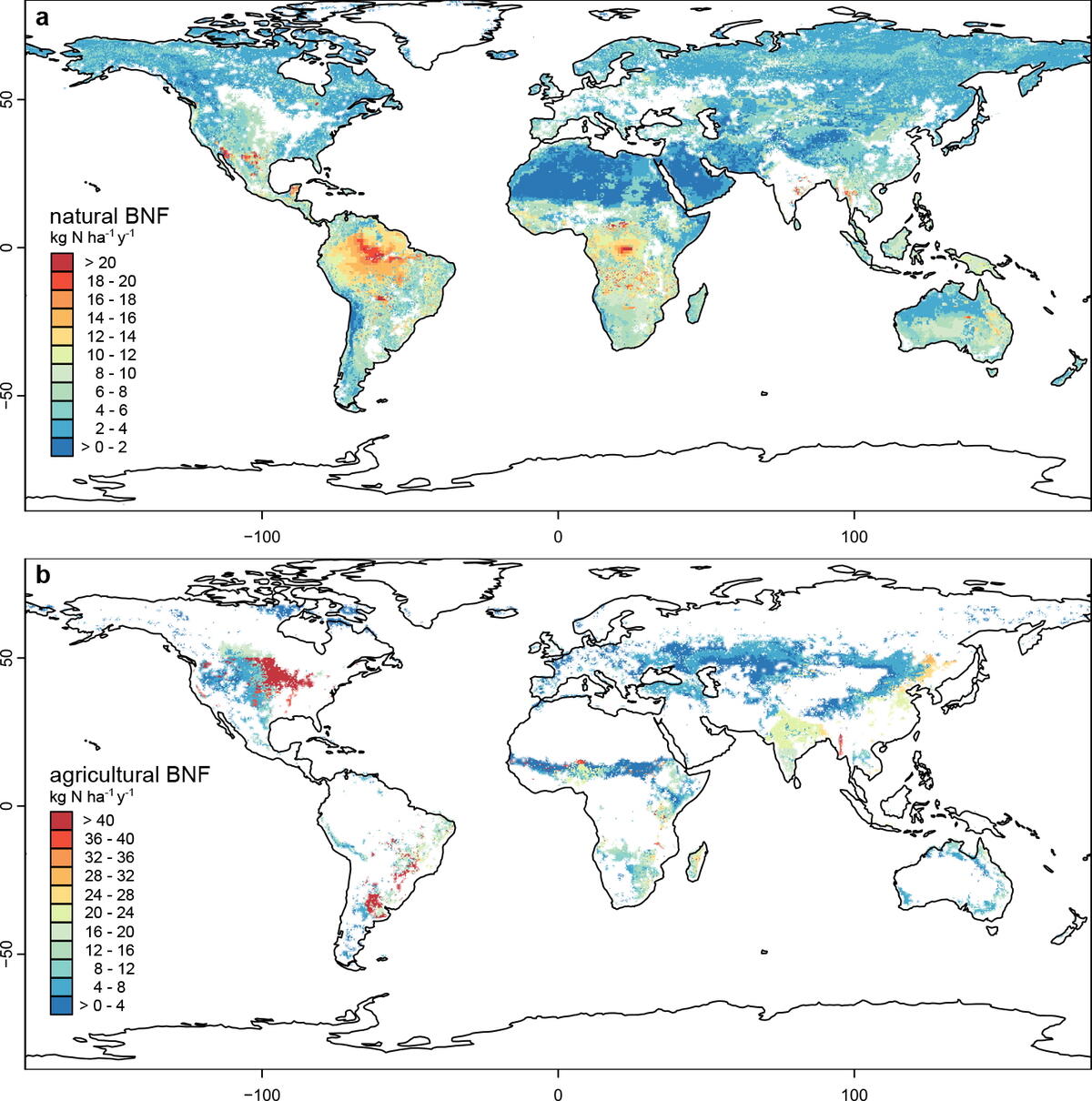
Reis Ely called for more consistent measuring and monitoring of biological nitrogen fixation, “to help us ensure we have all the nitrogen in the ground that we need without it becoming too much of a good thing.”
For her leadership on the paper, Reis Ely has earned the Gene E. Likens Junior Scientist Outstanding Publication Award from the Ecological Society of America’s Biogeosciences Section. Named after Cary founder Gene Likens, who co-discovered acid rain, the award promotes early-career scientists and highlights exceptional work in the field.
Citation
Reis Ely, C.R., Perakis, S.S., Cleveland, C.C. et al. Global terrestrial nitrogen fixation and its modification by agriculture. Nature 643, 705–711 (2025). https://doi.org/10.1038/s41586-025-09201-w
Funding
This research was supported in part by an appointment to the USGS Research Participation Program administered by the Oak Ridge Institute for Science and Education through an interagency agreement between the U.S. Departments of Energy (DOE) and Interior (DOI) under DOE contract number DE-SC0014664.
The paper is a contribution from a working group on biological nitrogen fixation supported by the U.S. Geological Survey John Wesley Powell Center for Analysis and Synthesis.
Authors
Carla R. Reis Ely - Oregon State University and Oak Ridge Institute for Science and Education
Steven S. Perakis - United States Geological Survey
Cory C. Cleveland - University of Montana
Duncan N. L. Menge - Columbia University
Sasha C. Reed - United States Geological Survey
Benton N. Taylor - Harvard University
Sarah A. Batterman - Cary Institute of Ecosystem Studies, University of Leeds, and Smithsonian Tropical Research Institute
Christopher M. Clark - US Environmental Protection Agency
Timothy E. Crews - The Land Institute
Katherine A. Dynarski - University of Montana
Maga Gei - Association for Tropical Biology and Conservation
Michael J. Gundale - Swedish University of Agricultural Sciences
David F. Herridge - University of New England, Australia
Sarah E. Jovan - USDA Forest Service
Sian Kou-Giesbrecht - Dalhousie University
Mark B. Peoples - CSIRO Agriculture and Food
Johannes Piipponen - Aalto University
Emilio Rodríguez-Caballero - Universidad de Almería and Max Planck Institute for Chemistry
Verity G. Salmon - Oak Ridge National Laboratory
Fiona M. Soper - McGill University
Anika P. Staccone - Earthshot Labs
Bettina Weber - University of Graz and Max Planck Institute for Chemistry
Christopher A. Williams - Clark University
Nina Wurzburger - University of Georgia




